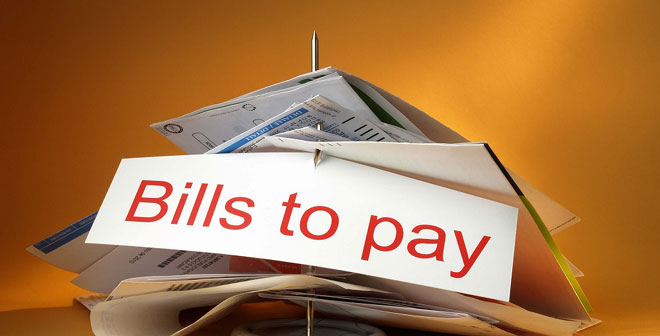It can be difficult knowing where to turn and who to trust when it comes to financial help. You can always go by the classic warning of ‘if it sounds too good to be true it probably is’ but who wants to live life as a cautionary tale? Understanding your spending habits and identifying red flags are key to making better financial decisions. Here are five useful strategies to help you banish debt from your life for good.
1. Turn To Family, Not Credit Cards
The bank is not your friend or family; you should not be accepting credit card offers in your time of need. If you haven’t saved an adequate emergency fund (explained in strategy 5) when faced with a crisis concerning your health, safety, or family, talk to someone close to you for help. Turn to not-for-profit lenders for fast cash loans on flexible terms If you’re not in a position to borrow from someone you know.
2. Create an Annual Budget and Stick To It
Set yourself the challenge of budgeting your expenses for the year ahead. Whether you use an excel spreadsheet or your diary and a calculator, mapping out your anticipated spending can be a great way to set your financial goals. Include all your living expenses, bills, health costs, groceries, and transport costs and include an estimated budget for other activities like social events, holidays and birthdays. This way you can also see the total yearly number you could potentially save and feel more inclined to stick to your habits for the long-run.
3. Automate Your Savings or Repayments
You should always have your savings separated from your daily checking account. Talk to your bank about biweekly or monthly direct transfers between accounts so you can set and forget your savings as soon as you get paid. If you’re in debt, the same should be done for any important repayments. This will prevent the temptation to spend the extra money and help you stick to your budget because you won’t see those extra funds until you review your accounts.
4. Reconsider Your Shopping
Stop shopping as a hobby or leisure activity. It’s one of the easiest ways to be lead to mindless spending and impulse purchases. If you truly enjoy store-browsing or exploring markets become an avid window shopper instead. If you’re tempted to buy an item, ask yourself the following:
- Do I really need this?
- Can I get this second hand?
- Can I borrow this?
If you can honestly justify making the purchase and cannot borrow the item or conveniently source a second-hand or cheaper option, then go for it.
5. Establish An Emergency Account
The only thing worse than experiencing a financial emergency is falling into a debt trap as a result of it. Create an emergency saving account to prevent this from happening to you in the future. Aim to cover 3 – 6 months worth of your living expenses and adjust it if your living situation changes, for example, when you have a family or even a new pet you’ll want to increase your savings to cover them as well. Keep the account hidden from your online banking and your card in storage so you’re never tempted to dip into this fund. It’s for rainy days only.
By taking all of the above into account you’ll instantly be practicing safer spending and making better personal finance choices. Goodbye debt, hello financial security!




